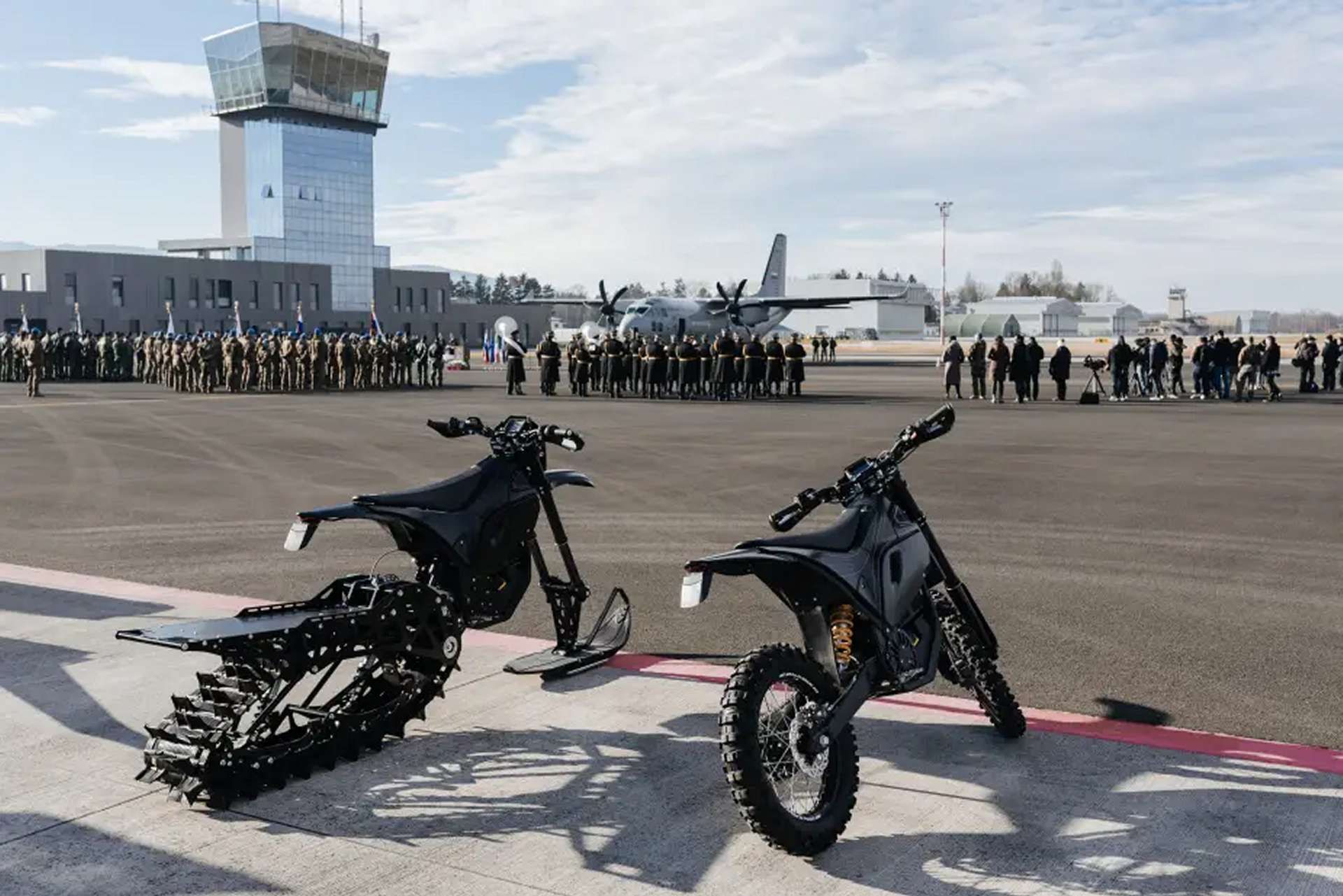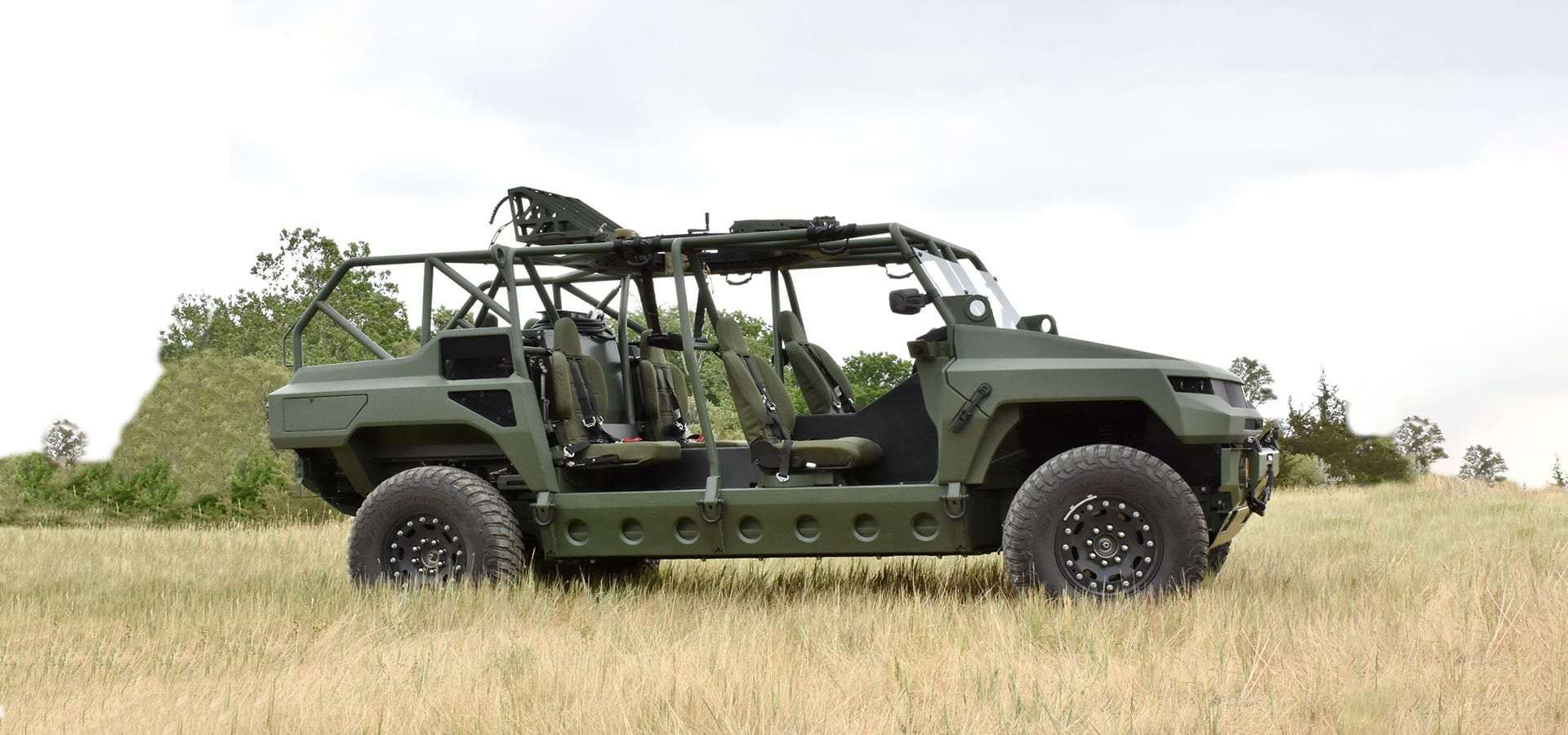Breaking News
General Tom Middendorf urges defense sector to address climate challenges.
At the recent World Defense Show 2024, General Tom Middendorf, Chairman of the International Military Council on Climate and Security, delivered an address on the imperative of climate-proofing defense organizations and capabilities, as both the effects of climate change and the global tensions it drives directly affect the defense and security industry.
Follow Army Recognition on Google News at this link

General Tom Middendorf advocated for innovation in resource efficiency and circularity to prevent future conflicts arising from resource scarcity. (Picture source: World Defense Show)
Sustainability measures have become part of every industry in terms of production, but climate change presents far greater challenges to the defense industry and requires more wide-ranging solutions, with its inherent threats to global security. General Tom Middendorf, Chairman of the International Military Council on Climate and Security, spoke to a select audience at the recent World Defense Show 2024 about the pressing need to understand and mitigate the devastating effects of climate change, outlining four key reasons why environmental sustainability is crucial for the defense sector: global trends and resource scarcity; climate change as a risk multiplier; resilience against severe weather events; and changing policies and legislation.
Middendorf began by highlighting four competing global trends that are creating an increasing gap between demand and supply. He pointed out that the world’s population has nearly doubled this century, significantly increasing the demand for water, food, and resources. At the same time, the availability of these resources is decreasing. He explained that climate change exacerbates this issue by causing sea level rise, desertification, and increased flooding vulnerability, which reduce habitable and arable land. Additionally, the geopolitical shift from globalization to a more fragmented world complicates the search for global solutions to these problems.
Current patterns of resource consumption are unsustainable, and Middendorf advocated for innovation in resource efficiency and circularity to prevent future conflicts arising from resource scarcity. He emphasized that producing more resources in the same manner is not viable and highlighted the need to reduce resource dependency through innovative approaches. Without addressing these issues, the world risks depleting resources more rapidly, leading to severe supply chain disruptions and increased global competition, potentially resulting in conflicts.

In the United States, Mack Defense has begun testing its Common Tactical Truck (CTT) prototypes with the U.S. Army, which feature improved fuel efficiency and possible autonomous capabilities. (Picture source: Mack Defense)
On a regional level, Middendorf described climate change as a risk multiplier that exacerbates existing tensions and drives instability. Drawing from his experiences in over 20 crisis areas worldwide, he explained how water scarcity and droughts have fueled tensions and been exploited by extremists in regions like Afghanistan, Iraq, Somalia, Sudan, and Mali. He stressed that while climate change may not directly cause conflicts, it acts as a significant driver of local and regional instability.
Middendorf highlighted the critical need to address water stress, drought-induced migration particularly in Africa, and vulnerability to flooding in densely populated regions like Southeast Asia. He described Southeast Asia, home to nearly two billion people and a vital global supply chain hub, as a region at risk due to its susceptibility to rising sea levels and intensifying rain periods.
The increasing frequency and severity of natural disasters pose another significant challenge. Middendorf stressed the importance of protecting assets and infrastructure, noting that the costs and impacts of natural disasters are escalating. Last year alone, there were 66 natural disasters each causing over $1 billion in damage, with a total global damage of $350 billion and 95,000 victims. He emphasized that only one-third of these costs were covered by insurance, making it increasingly difficult to insure such risks. Protecting critical infrastructure, hubs, and supply chains is essential, alongside the growing demand for humanitarian assistance and disaster relief operations.

In Slovakia, the company STRiX recently presented both variants of its stealth electric motorbikes to the Slovenian special forces. (Picture source: STRiX)
Middendorf acknowledged the global push towards net-zero emissions and the integration of climate considerations into defense policymaking. He highlighted the defense sector's responsibility to reduce its carbon footprint while maintaining operational effectiveness. Achieving sustainability without compromising effectiveness involves developing self-sufficiency in operational units. Generating their own energy, water, and spare parts, using remote diagnostics, and reducing logistical supply chains are vital steps towards this goal.
To tackle these global challenges, Middendorf proposed a three-pronged approach to the defense energy transition. The first involves adapting peacetime facilities by implementing civil best practices and technologies in non-operational settings, such as harbors, airports, and barracks. The second level focuses on integrating civil technologies into light and medium operational capabilities, creating living labs for experimentation and fielding new concepts. The final area targets high-end capabilities, such as naval vessels and air fighters, where technology needs further advancement. Investment in research and development for energy-efficient platforms and equipment with built-in self-sufficiency is crucial.
Middendorf provided examples of potential innovations, including 3D printing for on-the-spot spare parts production, robotics for logistical functions, remote diagnostics and augmented reality for maintenance systems, and remote surgery capabilities. These technologies offer new options but require open-mindedness and public-private cooperation to advance energy transition efforts.
In his address to an elite audience of government and industry leaders at the World Defense Show, Middendorf called for the defense sector to embrace sustainability and climate resilience as essential components for safeguarding global security. The defense industry must adapt to build climate resilience and ensure a sustainable future for military forces and businesses.

The electric Light Reconnaissance Vehicle (eLRV) project, which includes the eMCV from GM Defense, must offer several enhancements when compared to the current High Mobility Multipurpose Wheeled Vehicle (HMMWV) platform (Picture source: GM Defense)
Recent advancements in the defense sector showcase the integration of sustainability and innovation. For example, Mack Defense has begun testing its Common Tactical Truck (CTT) prototypes with the U.S. Army. These vehicles, based on the Mack Granite model, include an on-road tractor, off-road tractor, and a load-handling system truck. They feature advanced safety technologies, increased off-road mobility, advanced cybersecurity, open systems architecture, and improved fuel efficiency. The prototypes also incorporate future autonomous vehicle capabilities and electrification technologies, aiming to modernize and replace the Army's fleet of heavy tactical trucks while ensuring they remain fuel-efficient and capable of handling various terrains and conditions.
Additionally, the U.S. Army has approved the acquisition of Electric Light Reconnaissance Vehicle (eLRV) prototypes. These vehicles, which include both hybrid and fully electric models, represent the Army's effort to field environmentally sustainable vehicles. The eLRVs are designed to be integrated with the latest technological advancements, offering capabilities such as enhanced powertrains and idle-free systems that reduce energy demand. These prototypes will be evaluated for their performance and durability in various operational scenarios, including soldier feedback on their drivability and ergonomics.
These examples illustrate the defense sector's efforts to integrate sustainability into their operations, demonstrating that the transition to more environmentally friendly and efficient technologies is both feasible and underway.


























